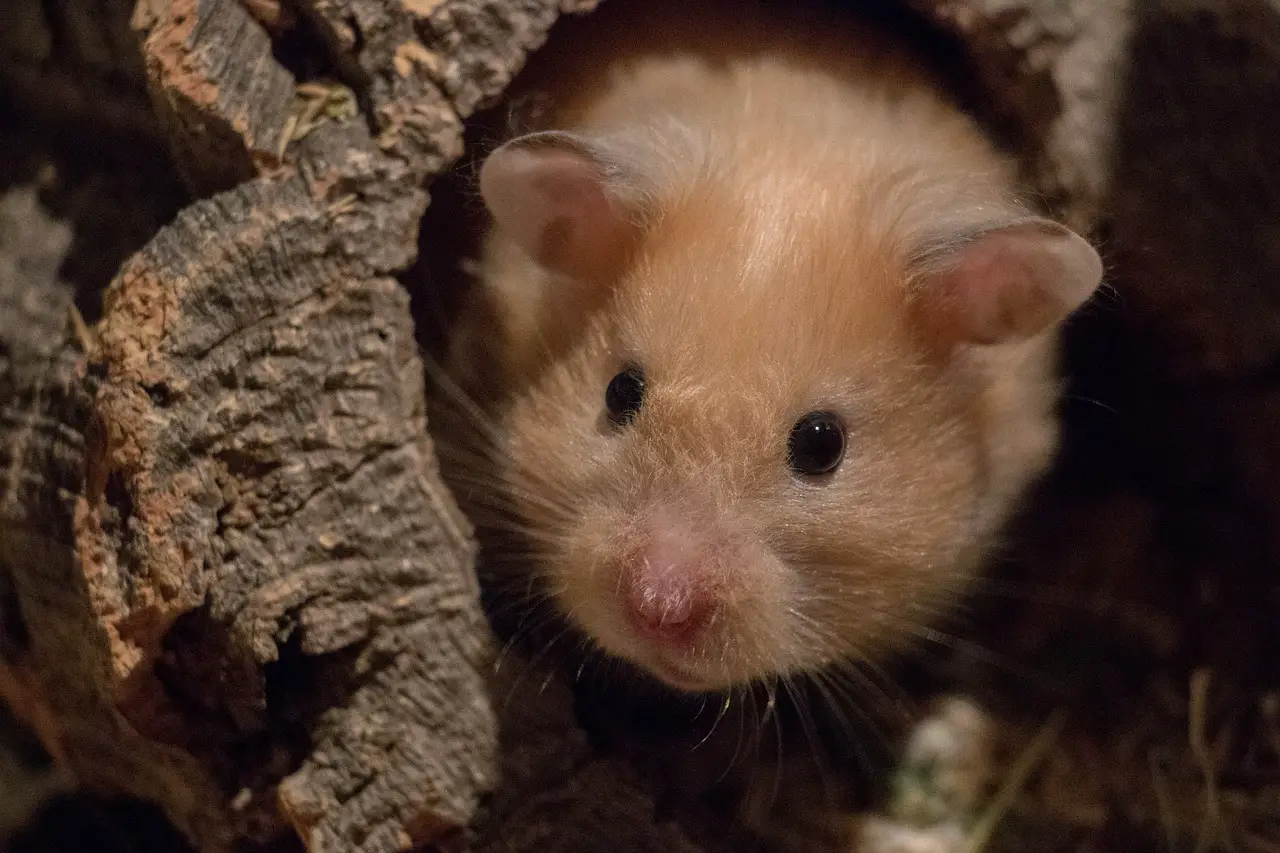Hamsters are delightful pets known for their playful and curious nature. As a responsible hamster owner, it’s essential to provide them with a safe and stimulating environment. One crucial aspect of creating an enriching habitat for your hamster is providing suitable hideouts. In this article, we will explore the importance of hamster hideouts, different types available, factors to consider when choosing one, DIY options, popular brands, maintenance tips, and their role in promoting mental stimulation.
You may also want to know if a hamster will die without a wheel.
Introduction
Hamsters are naturally inclined to seek shelter and hide when they feel threatened or need privacy. A suitable hideout mimics their natural instincts and offers them a secure place to retreat to. Let’s delve deeper into the significance of hamster hideouts and the various options available.
Understanding the Importance of Hamster Hideouts
Hamster hideouts serve multiple purposes in a hamster’s life. They provide a sense of security and comfort, helping hamsters feel safe and protected in their environment. Hideouts also serve as a cozy resting place, where your furry friend can take naps or enjoy some uninterrupted downtime. Additionally, hideouts promote mental stimulation by encouraging exploratory behavior and providing opportunities for play.

Different Types of Hamster Hideouts
When it comes to hamster hideouts, there is a wide variety to choose from. Let’s explore some popular options:
3.1 Basic Hideouts
Basic hideouts are simple structures that provide hamsters with a secure space to retreat to. These can be small wooden houses or plastic domes with one or two entrances. They are suitable for hamsters who prefer a compact and straightforward hiding place.
3.2 Tunnel Hideouts
Tunnel hideouts are ideal for hamsters that enjoy exploring and navigating through narrow spaces. These hideouts consist of interconnected tubes that create a network of tunnels for your furry friend to traverse. Tunnel hideouts promote exercise and mental stimulation, keeping your hamster active and entertained.
3.3 Multi-Chamber Hideouts
Multi-chamber hideouts feature multiple compartments or levels connected by tunnels or ramps. They offer a more intricate and engaging hiding place for hamsters. These hideouts allow for different activities in each chamber, such as nesting, sleeping, or climbing. Hamsters will appreciate the variety and complexity provided by multi-chamber hideouts.
Factors to Consider When Choosing a Hamster Hideout
Selecting the right hamster hideout involves considering various factors.#### 4.1 Size and Accessibility
Ensure that the hideout is appropriately sized for your hamster. It should be spacious enough for them to enter, turn around, and stretch comfortably. Avoid hideouts with small openings that may cause discomfort or restrict movement.
4.2 Material and Durability
Choose a hideout made of safe and durable materials. Avoid options with sharp edges or toxic components. Opt for sturdy hideouts that can withstand your hamster’s chewing tendencies and provide long-lasting use.
4.3 Safety Features
Check for safety features such as ventilation holes to ensure proper airflow within the hideout. Avoid hideouts with small parts that could pose a choking hazard. Additionally, ensure that the hideout is stable and won’t easily tip over, preventing any potential injuries to your hamster.
DIY Hamster Hideouts: Creative and Cost-Effective Options
If you’re feeling creative, you can make your own hamster hideouts using readily available materials. Here are some DIY options to consider:
5.1 Cardboard Hideouts
Cardboard makes an excellent material for crafting simple and disposable hideouts. You can cut and fold cardboard boxes to create cozy hideouts, ensuring proper ventilation and easy access. Cardboard hideouts are cost-effective and can be replaced as needed.
5.2 Coconut Shell Hideouts
Repurposing a coconut shell as a hideout offers a natural and visually appealing option for your hamster. Ensure the shell is thoroughly cleaned, and the openings are appropriately sized. Coconut shell hideouts provide a unique texture and a cozy, cave-like environment for your furry friend.
5.3 DIY Tunnel Systems
Constructing a DIY tunnel system using PVC pipes or flexible tubing can be a fun and engaging project. Create a network of tunnels and connect them to various hideouts, providing your hamster with an exciting maze to explore. Customize the tunnels with additional openings or obstacles to add complexity to their playtime.

Popular Hamster Hideout Brands
If you prefer ready-made options, several brands offer a range of hamster hideouts. Here are three popular brands worth considering:
6.1 Brand A: Features and Benefits
- Highlight the features and benefits of Brand A’s hideouts.
- Discuss the materials used, design elements, and any unique features that set them apart.
- Mention customer reviews and positive experiences with this brand.
6.2 Brand B: Features and Benefits
- Highlight the features and benefits of Brand B’s hideouts.
- Discuss the materials used, design elements, and any unique features that set them apart.
- Mention customer reviews and positive experiences with this brand.
6.3 Brand C: Features and Benefits
- Highlight the features and benefits of Brand C’s hideouts.
- Discuss the materials used, design elements, and any unique features that set them apart.
- Mention customer reviews and positive experiences with this brand.
Maintaining and Cleaning Hamster Hideouts
Regular maintenance and cleaning of hamster hideouts are essential for your pet’s health and well-being. Here are some tips to keep in mind:
7.1 Regular Inspections
Periodically inspect the hideouts for any signs of wear, damage, or bacterial growth. Replace or repair damaged hideouts promptly to ensure the safety of your hamster. Check for any trapped food, feces, or moisture that may require cleaning.
7.2 Cleaning Techniques
Use non-toxic cleaning agents and mild soaps to clean hamster hideouts. Rinse them thoroughly and ensure they are completely dry before placing them back in the habitat. Avoid using harsh chemicals that may be harmful to your hamster.
The Role of Hamster Hideouts in Promoting Mental Stimulation
Hamsterhideouts play a crucial role in promoting mental stimulation for your furry friend. By providing hideouts with various chambers, tunnels, and engaging designs, you create an environment that encourages exploration and activity. Hamsters naturally love to burrow, climb, and navigate through small spaces. A well-designed hideout offers them opportunities to exercise these instincts.
When your hamster has access to a diverse range of hideouts, it stimulates their curiosity and encourages them to explore their habitat. Multi-chamber hideouts with different levels and compartments promote physical exercise and provide mental challenges. They can climb, jump, and navigate through tunnels, keeping them physically active and mentally engaged.
Furthermore, hideouts serve as excellent enrichment tools. You can place treats or toys inside the hideouts, encouraging your hamster to forage and discover hidden surprises. This adds an extra element of excitement and mental stimulation to their daily routines.
By providing a variety of hideouts, you create a dynamic and ever-changing environment for your hamster. Regularly rearranging the hideouts and introducing new ones can prevent boredom and keep your furry friend entertained.
Conclusion
Hamster hideouts are essential for creating a safe, secure, and stimulating environment for your pet. By understanding the importance of hideouts, considering the various types available, and choosing suitable options, you provide your hamster with the necessary spaces to rest, play, and explore. Additionally, DIY options and popular brands offer a wide range of choices to suit your preferences and budget. Remember to regularly maintain and clean the hideouts to ensure your hamster’s well-being. With carefully selected hideouts, you can enhance your hamster’s mental stimulation and overall happiness.
FAQs
1. Can I use a hideout designed for other small animals for my hamster? Yes, as long as the hideout is appropriately sized and safe for hamsters, you can use hideouts designed for other small animals. However, ensure that the hideout doesn’t have any small openings or features that may harm your hamster.
2. How many hideouts should I provide for my hamster? It’s recommended to have at least two hideouts in your hamster’s habitat. This allows them to have options and choose a hideout that suits their mood or preference at any given time.
3. Can I use natural materials, such as branches or stones, as hideouts? While natural materials can add an aesthetic appeal to the habitat, they might not provide the same level of security and comfort as purpose-built hideouts. Ensure that any natural materials used are safe, clean, and free from sharp edges that could harm your hamster.
4. How often should I replace hamster hideouts? The frequency of replacing hamster hideouts depends on their condition and wear. Regularly inspect them for any signs of damage, and replace them when necessary to maintain a safe and comfortable environment for your hamster.
5. Can I wash hamster hideouts with soap and water? Yes, you can wash hamster hideouts with mild soaps and water. Ensure that the hideouts are rinsed thoroughly and dried completely before placing them back in the habitat. Avoid using harsh chemicals that may be harmful to your hamster.
